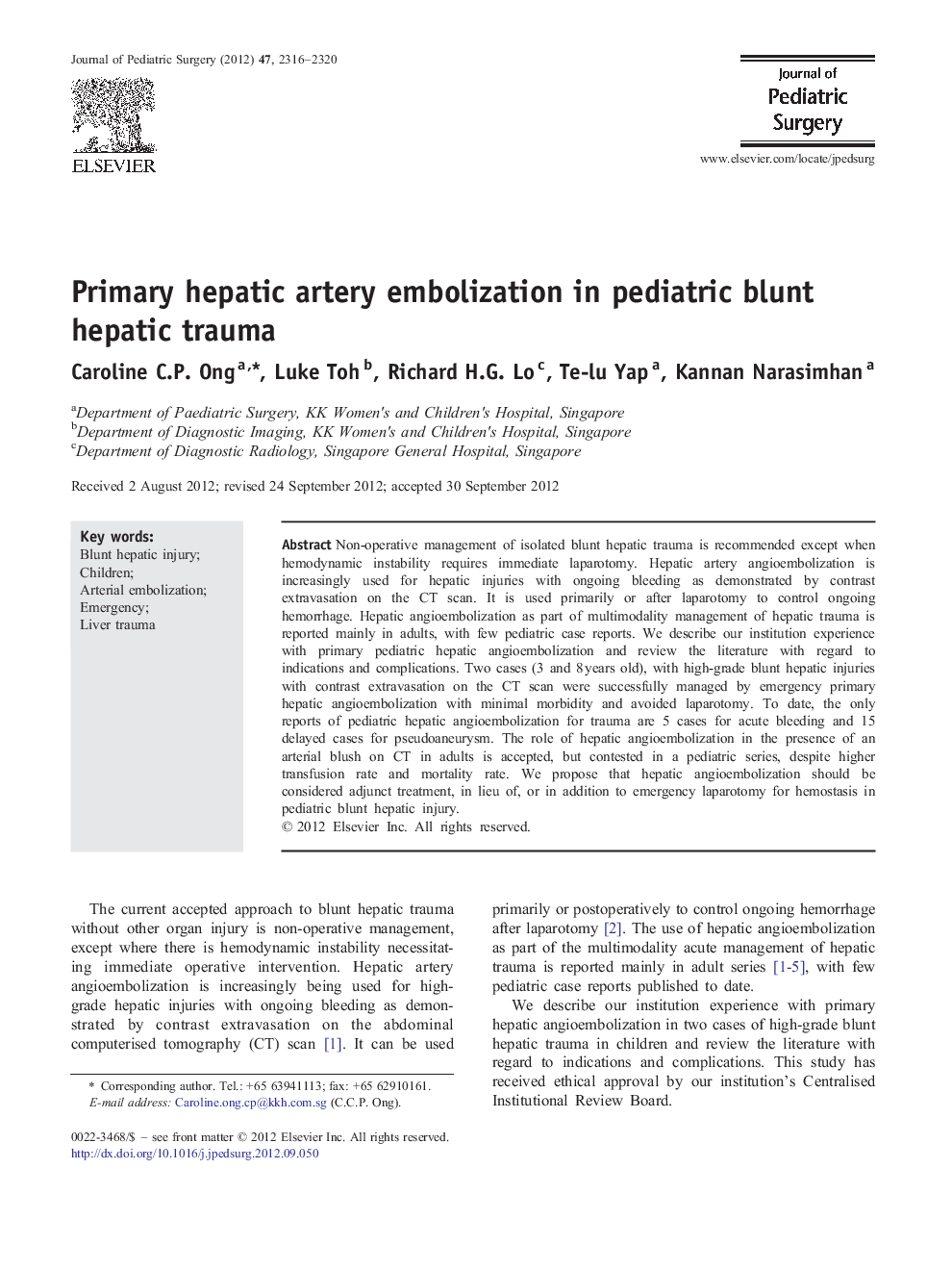| Article ID | Journal | Published Year | Pages | File Type |
|---|---|---|---|---|
| 4156491 | Journal of Pediatric Surgery | 2012 | 5 Pages |
Non-operative management of isolated blunt hepatic trauma is recommended except when hemodynamic instability requires immediate laparotomy. Hepatic artery angioembolization is increasingly used for hepatic injuries with ongoing bleeding as demonstrated by contrast extravasation on the CT scan. It is used primarily or after laparotomy to control ongoing hemorrhage. Hepatic angioembolization as part of multimodality management of hepatic trauma is reported mainly in adults, with few pediatric case reports. We describe our institution experience with primary pediatric hepatic angioembolization and review the literature with regard to indications and complications. Two cases (3 and 8 years old), with high-grade blunt hepatic injuries with contrast extravasation on the CT scan were successfully managed by emergency primary hepatic angioembolization with minimal morbidity and avoided laparotomy. To date, the only reports of pediatric hepatic angioembolization for trauma are 5 cases for acute bleeding and 15 delayed cases for pseudoaneurysm. The role of hepatic angioembolization in the presence of an arterial blush on CT in adults is accepted, but contested in a pediatric series, despite higher transfusion rate and mortality rate. We propose that hepatic angioembolization should be considered adjunct treatment, in lieu of, or in addition to emergency laparotomy for hemostasis in pediatric blunt hepatic injury.
